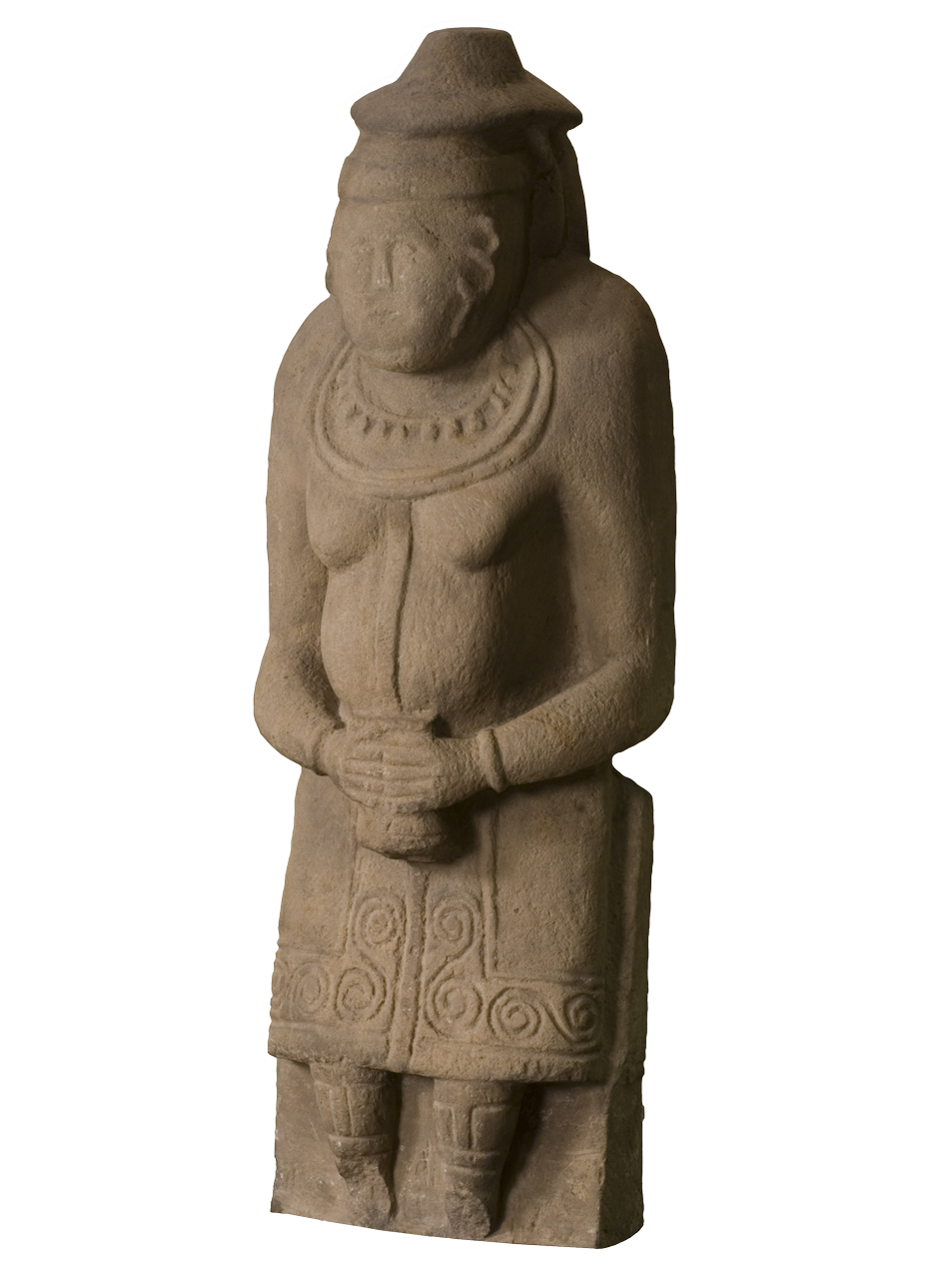POLOVTSIAN STATUE

Stone statues that since ancient times were scattered across the steppe expanses of Eastern Europe are known in Russia as "stone babas". They owe their origin to the nomads-Cumans (Kipchaks), who first appeared at the borders of the old Russian state in 1055 that is evidenced by the Hypatian Codex, and for two centuries remained close neighbors of Russia.
Statues that were symbolizing ancestors were placed on the hill-sites of the steppe, burial mounds, in specially constructed sanctuaries.
"Baba" from the museum’s collection depicts a noble richly dressed woman. Her costume consists of a long caftan with a clasp, the bottom and hem of which are decorated with ornaments. On her head is a complex headdress – hat with a piece of fabric descending on the back and a forehead ribbon, on her neck accessories are: two smooth neck torcs and necklace of round beads, in ears – earrings.
Stone statues that since ancient times were scattered across the steppe expanses of Eastern Europe are known in Russia as "stone babas". They owe their origin to the nomads-Cumans (Kipchaks), who first appeared at the borders of the old Russian state in 1055 that is evidenced by the Hypatian Codex, and for two centuries remained close neighbors of Russia being sometimes implacable enemies and sometimes allies of Russian dukes in their feuds.
Statues that were symbolizing ancestors were placed on the hill-sites of the steppe, burial mounds, in specially constructed sanctuaries. William of Rubruck (c. 1220 – c. 1293) - a Flemish Franciscan missionary, traveler and scientist, who by order of Louis IX in 1253-1255 traveled to Mongolia and in his book “The journey to the eastern parts of the world” he wrote that “Cumans mound a big hill over the dead and put a statue for him turned to the east and carrying a cap in a hand near its belly-button”. Despite clearly portrait traits, statues show not concrete men or women, but legendary personalities with features of gods and heroes. Around them were performed religious rites and memorial feasts.
"Baba" from the museum’s collection depicts a noble richly dressed woman. Her costume consists of a long caftan with a clasp, the bottom and hem of which are decorated with ornaments. On her head is a complex headdress – hat with a piece of fabric descending on the back and a forehead ribbon, on her neck accessories are: two smooth neck torcs and necklace of round beads, in ears – earrings. There is a vessel, probably for offerings, in her folded on her stomach arms.
“Stone babas”, being some kind of chronicles in stone give a chance to imagine how people of that ancient folk looked like, what clothing and accessories they were wearing, what household items they used.
